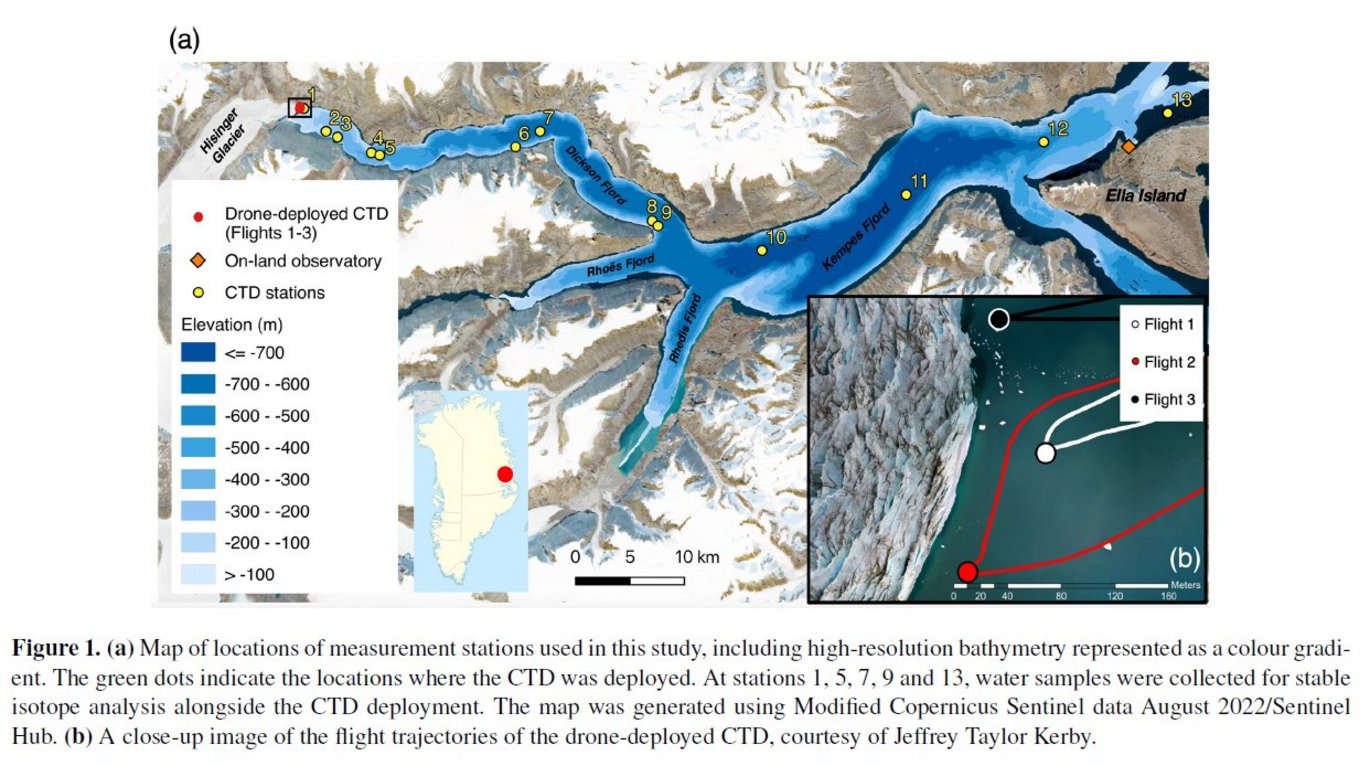Meltwater from the Greenland ice sheet and its water isotope distribution in Dickson Fjord, East Greenland
New publication by Fleur Rooijakkers, Ebbe Poulsen, Eugenio Ruiz-Castillo, and Søren Rysgaard

Abstract:
Glacier retreat and mass loss in East Greenland have profound implications for global sea-level rise, making it crucial to understand the complex dynamics of glacier–ocean interactions. Currently, our knowledge of East Greenland glacial fjords is limited, and the processes occurring directly in front of these glaciers, particularly the fate of subglacial meltwater, remain poorly understood. In this study, conducted in Dickson Fjord, East Greenland, in August 2022, hydrographic and stable water isotope measurements at various depths and fjord locations were carried out, starting from the terminus of the marine-terminating glacier. Employing a drone-deployed ocean profiler, we obtained salinity and temperature profiles as close as 20m from the glacier terminus. We found that the terminus is primarily in contact with a cold Polar Water layer, with temperatures ranging between 0.8 and 1.7 °C. Within this layer, we observed an increase in temperature close to the glacier terminus.
In the surface water layer, we identified two distinct depleted water isotope signals originating from the glacier: one located at the surface and the other near the freshwater freezing line, separated by non-depleted water. Based on our findings, we hypothesise that subglacial meltwater undergoes freezing upon encountering the cold Polar Water at the terminus. The buoyant ice crystals (frazil) formed during this refreezing process would then ascend to the surface, where they encounter positive ocean temperatures and melt. This frazil ice crystal formation process would explain the temperature increase in the Polar Water layer (due to latent heat released during freezing) and the depleted water isotope signal around the freshwater freezing line.
